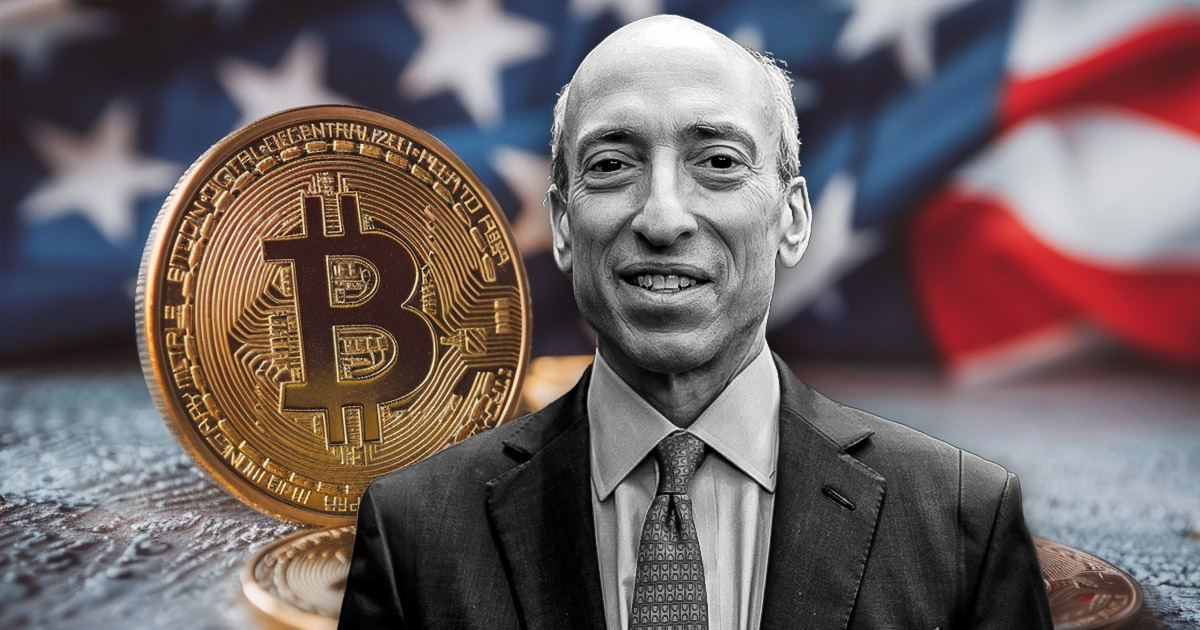The markets are rocked. Many of you will check your portfolios and ask why you have lost over 50% of your net worth? The answer is, for once, not FUD coming out of China, Europe, or the SEC.
The fear, uncertainty, and doubt among retail and institutional investors have been triggered by a direct attack on what we stand for.
We are under attack
Today, we are under a concerted attack on the crypto industry at large from traditional businesses and organizations. I believe this is because crypto has established itself as a realized existential threat to the conventional financial system.
Gone are the days of people hypothesizing that crypto could take over. The path to a new world order based on blockchain now has millions of people walking on it, and someone is not happy about it.
Many people are waking up to see significant losses in their portfolios. Bitcoin is down 60% from its all-time high, Ethereum is down 30% in a week, LUNA is down 99.9%, and UST is way off its dollar peg at $0.16.
Further, the world’s biggest stablecoin, Tether USD, has shown signs of vulnerability by also losing its peg on centralized exchanges. This, of course, is due to people selling. However, the catalyst, I believe, was a coordinated attack on crypto.
Traditional finance, governments, and business leaders outside of the web3 space are scared of the change blockchain can bring, and they want to take us down.
The concept that crypto is under attack is not just a theory. Several public organizations, including the World Economic Forum, the International Monetary Fund, Greenpeace, and an unknown number of other parties, are launching an attack on the entire cryptocurrency ecosystem.
Whether these attacks are coordinated or simply serving a common goal is not for me to speculate, but they have created a perfect storm.
Greenpeace
Last month, Greenpeace created a media campaign, which has been backed up by the WEF, aimed at people outside of the crypto ecosystem. The “clean up Bitcoin” campaign is soliciting for Bitcoin to change its consensus mechanism to proof of stake.
The reason? It is wasteful and consumes too much of the world’s energy. Its laughable tagline reads:
“You’ve heard Bitcoin fuels the climate crisis, but did you know a software code change could clean it up?”
The initial statement suggests that Bitcoin is responsible for the climate crisis when at least 58% of Bitcoin’s energy is sourced from renewable energy. Some reports indicate that it is as high as 76%. Further, it is trending towards renewable energy at a fast pace.
Sam Callahan, a Bitcoin Analyst at Swan Bitcoin, told us exclusively via an email interview that he believes the campaign is “naive’ at its premise. Callahan highlighted that Bitcoin’s code cannot just be “changed”; it requires approval from the network.
Indeed, a move to proof of stake would be seen as “negative for the health of the system.” Further, he pointed out that anyone can propose a BIP (Bitcoin Improvement Proposal).
Still, instead, they have “decided to start a misinformation marketing campaign instead of simply introducing a BIP.”
In a final statement, Callahan declared;
“If you change the code to Proof of Stake, you would lose all the traits that make Bitcoin special.”
Members of the US Congress
A group of US Senators recently petitioned the EPA, claiming:
“Cryptocurrency facilities across the country are polluting communities and are having an outsized contribution to greenhouse gas emissions.”
The group seemingly does not understand the difference between computing power and energy generation. Bitcoin farming requires electricity the same as any other server farm. Essentially just banks of specialized computers.
Bitcoin miner regulation would set a precedent that could affect companies such as Amazon, Google, and Microsoft to a devastating effect. As John Warren, CEO of GEM Mining told us:
“It is important to understand that market dynamics dictate the electricity that bitcoin mining operations consume – and how it is generated. Miners do not inherently create their own emissions, but rather purchase the electricity that is available on the open market. Fortunately, a growing percentage of that electricity is coming in the form of renewables – from solar to wind.”
World Economic Forum
“You’ll own nothing, and you’ll be happy” is a debunked but perhaps still accurate slogan used concerning the WEF. The WEF famously tweeted in 2017 that:
“In 2020, Bitcoin will consume more power than the world does today.”
This didn’t come true, given that in 2018 global energy usage was around 23,000TWh, and in 2022, Bitcoin uses around 144TWh annually. Of that, just 60TWh comes from non-renewable sources.
It is important to note that energy usage is not directly correlated to carbon emissions. When you consider this, Bitcoin likely contributes 23 megatons to carbon emissions out of the 31,500 megatons released globally, or 0.07%.
Further, many Bitcoin mining companies also use carbon credits to offset emissions. In 2022 1.1TWh of natural gas will be wasted through flaring alone, but Bitcoin, the most energy-efficient monetary system globally, must be the target.
With Bitcoin, you put 1KWh in, and you get 0.000007017BTC out, or roughly $0.21. As a comparison, flaring contributes 400 megatons of carbon dioxide into the atmosphere annually. In traditional monetary systems, you will need to spend 10KWh to just heat the office building for half of the government treasury employees, let alone every other aspect that goes into minting fiat currency.
Members of the WEF may cite articles and programs they have written debating the use cases of blockchain technology. Still, one that they often come back to is the introduction of Central Bank Digital Currencies.
CBDCs have the potential to take all of the strengths of blockchain for government control and remove all of the benefits for the average person. A WEF report from 2021 reviews the relationship between stablecoins and CBDS. Interestingly, it details how:
“Existing private blockchain projects could assist in the Existing private sector blockchain-based digital assets could potentially assist in the facilitation of cross-border wholesale interbank CBDC payments and transactions. Examples include the utility settlement coin (USC) and XRP digital assets.”
It is essential to know that Ripple (XRP) co-founder Chris Larsen is a member of the Agenda Committee for the WEF. Alongside his technology being cited in official WEF reports, he has also publicly stated that he donated $5 million to the “change the code” campaign.
According to Nick Dimondi from BitBoy Crypto;
“Ripple is part TradFi and is the darling of the central banks,”
The report references a speech by Lael Brainard of the Federal Reserves that states that the existence of Bitcoin and stablecoins means there must be a new digital currency to protect sovereign currencies.
“The introduction of Bitcoin and the subsequent emergence of stablecoins … have raised fundamental questions about legal and regulatory safeguards, financial stability, and the role of currency in society. This prospect has intensified calls for CBDCs to maintain the sovereign currency as the anchor of the nation’s payment systems.”
In our interview, Callaghan also contributed;
“the WEF’s agenda against Bitcoin has less to do about the environment and stopping crime, and more to do with the fact that Bitcoin cannot be controlled by any institution or group of individuals.”
He believes that:
“The WEF is threatened by the freedom and power Bitcoin gives to the people, and that’s why we’re hearing more anti-Bitcoin rhetoric coming out of the WEF in recent months.”
The crypto community at large seems to share this sentiment. In another email interview, Nick Dimondi told us,
“the World Economic Forum fears Bitcoin down to its very core and is doing everything it can to FUD Bitcoin to stop its spread.”
He continued:
“The WEF has been called on the carpet for spreading lies about GMOs and Nuclear Power. But The World Economic Forum members views themselves as globalist royalty, creating all the rules and narratives and labeling anyone outside of them as “regressive” or worse. Bitcoin is the great disruptor to their plans for world order. They want to either regulate it’s use, or render Bitcoin worthless.”
International Monetary Fund
I am already smashing the word count limits we usually employ, so I’ll keep this one short for that reason alone. The IMF has also championed the concept of moving Bitcoin to proof of stake. They made Argentina anti-crypto by making it a $45B loan requirement. David Z Morris said in a CoinDesk piece last year:
“The IMF is not a neutral aid organization, but the economic arm of a vast power structure that frequently hides itself behind the language of uplift and reform…. Crypto threatens that power, even if the threat is somewhat distant for now.”
I believe that organizations such as the IMF have seen the meteoric rise of crypto over the past two years and decided to do something about it. The recent exponential growth of decentralized stablecoins such as UST threatens “sovereign currencies.”
I’m not sure I’m supposed to talk about UST in the past tense, but I choose not to; I prefer to endure. I choose to believe in a world where decentralization can share the power among all the world’s people instead of small groups of mostly rich white men (writing as a moderately wealthy white man.).
The Unknown
There have been numerous rumors as to the source of the concerted attack on UST that started over the weekend. Blackrock, Citadel and have all denied being involved in the large block selling of TerraUSD.
We know that a large volume of selling occurred on Curve Finance over the weekend, the event that started a snowball effect across the whole cryptocurrency ecosystem. Edwin Mata, CEO & Co-Founder at Brickken, explained that:
“The problem rose when the selling pressure began and UST started being bought at a discount, since it started to become depegged from the USD. The discounted UST started being used to mint $Luna creating the gap between the Luna token and the stablecoin UST which became an opportunity for many traders to use ust to mint luna and then sell off luna, creating a vicious circle which end is unknown.”
A Twitter thread outlines exactly how much was made on the part of the UST fiasco. It details how 100K Bitcoin was used to manipulate the price of UST to create shorting opportunities. Gemini has denied making the 100k BTC loan to an institutional counter-party involved in the shorting of LUNA.
It is important to note that none of this activity is illegal, as far as I am aware. It simply takes advantage of an organization that missed a hole in its system. Edson Ayllon, Product Manager of dHEDGE, described the issue with Terra as
“an example of an algorithm that hasn’t considered the worst-case scenario.”
How to make a >800 million dollars in crypto attacking the once 3rd largest stablecoin, Soros style:
Everyone is talking about the $UST attack right now, including Janet Yellen. But no one is talking about how much money the attacker made (or how brilliant it was). Lets dig in🧵 pic.twitter.com/nGVfqjpVJb
— Onchain Wizard (@OnChainWizard) May 10, 2022
Onchain Wizard makes some assumptions and has an element of speculation, but the general thread of tweets outlines the series of events and the level of capital required. These actions possibly netted someone around $850 million in profit, but it also caused a knock-on effect on the entire crypto market. Iconium CEO Fabio Pezzoti told us:
“The word on the street is that Do Kwon is now looking for help from his biggest investors to put together a billion dollars and get the peg back by selling discounted $LUNA via OTC deals with a two-year vesting.”
Since then, LUNA has plunged below $0.01 and may never recover.
The aftermath and what is next
Other stablecoins have seen volatility following the sell-off, with USDT dropping almost 5% on Binance and even USDC teetering on some exchanges. These were liquidity issues due to a massive surge in daily volume on Binance, Kraken, and Huobi.
At the time of writing, USDT seems to have re-pegged, but the talking points for those against stablecoins are now forever in existence. UST lost its peg, and USDT almost followed suit from a layperson’s standpoint.
I expect to see Janett Yellen directly referencing Tether in front of the Treasury Committee before too long. In a further email interview, Everest’s CEO, Bob Reid, said,
“Since the invention of trading fiat, the human race decided and voted to have rules governing activities to protect the whole ecosystem and participants. But then, some snake oil salesman shows up and says the rules don’t apply to him? It’s pretty obvious that the OCC, CFTC, and SEC will be applying existing laws to the newer technologies, like stablecoins… most central banks will not be permitting a massive volume of non-USD fiat pegged stablecoins to be tradable on exchanges around the world.”
The perfect storm of media and economic attacks on crypto will have long-lasting effects. We can expect to see more moves for tighter regulation, not necessarily to protect small investors but to protect those invested in the traditional markets.
The move toward CBDCs is stronger than ever due to the now ‘obvious risks’ associated with stablecoins. Derek Lim from Bybit told us,
“No doubt governments and regulators will and ought to take an interest in this situation. I would like to point out that one of the key concerns that U.S. regulators have made clear in several reports is that a stablecoin bank run could destabilize the broader financial system. This incident has shown that a bank run on the third-largest stablecoin by market cap has zero spillover effect on the S&P 500 and beyond.”
However, I, for one, will not give up. The crypto community must come together and push forward with whatever world we are left with after this whirlwind of a week comes to an end.
Confidence will have taken a big hit, and onboarding new people into crypto could be more challenging. Yet, if you genuinely believe that we have a chance to replace the current system, then nothing has changed. I’ll tell you what, someone with a lot of money sure believes it.
I believe this week has been counterintuitive, one of the most bullish for crypto in a long time. When people go to this much effort to bring you down, you must really get in their way.
The amount of money, time, and energy spent on economic attacks, socio-economic reports, and media campaigns to try and stop crypto from taking over… well, in 2030, it will consume more power than the world does today.
Credit: Source link























